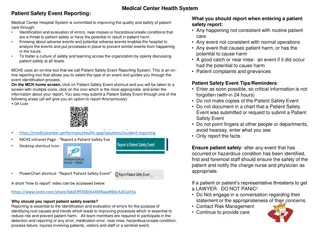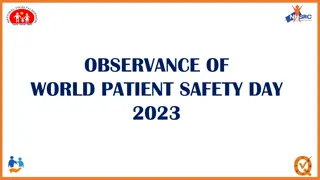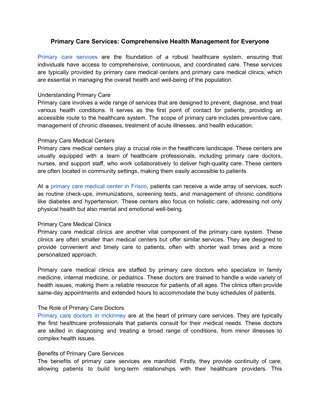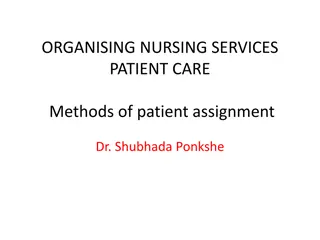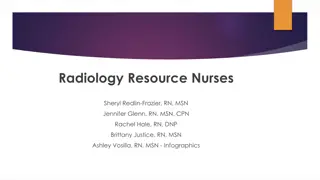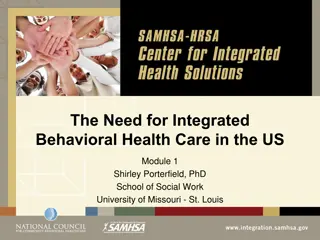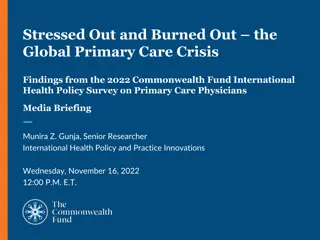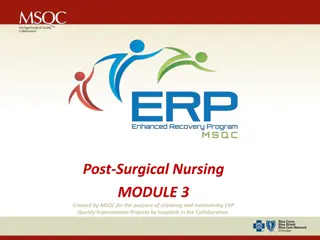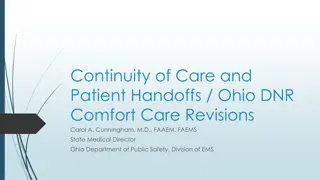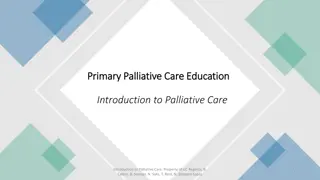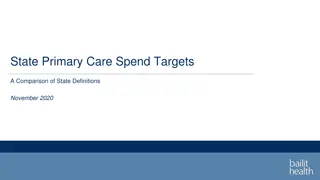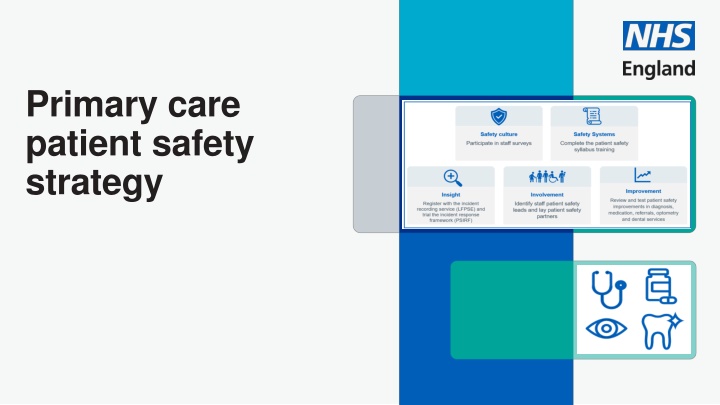
Enhancing Patient Safety in Primary Care: NHS Strategy Overview
Discover the NHS strategy for improving patient safety in primary care, focusing on incident recording, staff training, patient involvement, and system improvements. Learn about the impact of patient safety incidents in primary care and the key initiatives to create a safer healthcare environment. Explore the importance of a supportive culture, systematic safety approach, and patient engagement in enhancing patient safety in primary care.
Download Presentation

Please find below an Image/Link to download the presentation.
The content on the website is provided AS IS for your information and personal use only. It may not be sold, licensed, or shared on other websites without obtaining consent from the author. If you encounter any issues during the download, it is possible that the publisher has removed the file from their server.
You are allowed to download the files provided on this website for personal or commercial use, subject to the condition that they are used lawfully. All files are the property of their respective owners.
The content on the website is provided AS IS for your information and personal use only. It may not be sold, licensed, or shared on other websites without obtaining consent from the author.
E N D
Presentation Transcript
Primary care patient safety strategy
While the millions of interactions patients have with General Practice, dental, optometry and pharmacy teams each week are safe, the NHS wants to ensure that when things do go wrong, we do everything in our power to ensure patients are supported, the event is responded to, and action is taken to ensure it does not happen again with learning shared between organisations. Claire Fuller National Primary Care Medical Director Strategy published 26th September 2024 That s why the NHS is launching the patient safety strategy for primary care which will enable staff to record incidents on a national platform, receive additional training on how to identify and manage risks, and nominate staff within their organisations who will involve patients in their plans to improve safety. Aidan Fowler National Director of Patient Safety 2 NHS England Primary care patient safety strategy
Discovery journey Draft safety plan Research published Safety culture focus group Discovery group Data analysis Transformation Board More feedback Socialising Understanding impacts Revamped strategy Strategy published 3
The impact of patient safety in primary care 90% of all NHS patient interactions occur in primary care 97% of encounters in general practice are safe 0.7% of the 2.4 million patient safety incidents annually recorded nationally relate to primary care, so there is probably an under-representation of harm 21% of all new claims to NHS Resolution are from general practice (as reported in the new CNSGP and ELSP claims notified in 2023/24) Expenditure of 149 million for GP indemnity via NHS Resolution in 2023/34 Avery et al., 2020 estimated there are between 19,800 and 32,200 incidents of avoidable significant harm in general practice in England per year (similar data for community pharmacy, optometry and dental services are unknown): 61% diagnosis; 26% medication; 11% referrals Every incident of significant harm has a personal cost to patients, service users, families, carers and staff. Plus the financial cost of incident-related treatments, estimated at more than 100 million per year across the whole of primary care 4
Patient safety primary care strategy 1. Developing a supportive, learning environment and just culture in primary care, with sharing across the system so that the services can continually improve. 2. Ensuring that the safety and wellbeing of patients and staff is central, and that our approach to managing safety is systematic and based on safety science and systems thinking. 3. Involving patients in the identification and co-design of primary care patient safety ambitions, opportunities and improvements. 5
Capacity Acknowledging the huge pressures in primary care Suggestions came from primary care to address issues that have arisen locally Many of the actions are about the process of enhancing safety Keep bureaucracy to a minimum instead of rather than more of National commitments to support primary care (ie it is not all directed at primary care frontline teams) Timeframe for local commitments is iterative and flexible Implementation is about what we can do well Share the burden across boundaries and between systems 6
Benefits To patients and families: To staff: 1. Fewer patients harmed 2. Fewer complaints 3. Free, online patient safety training 4. Opportunity to raise what matters most 5. Improved primary care patient safety alerts and solutions 6. Reassurance of 3 strikes and we rethink principles 1. Free, online patient safety training 2. Support from ICB Patient safety specialists 3. National system (LFPSE) to record patient safety incidents and use as evidence for revalidation and annual appraisals 4. Enabling demonstration of positive patient safety culture to professional regulators 5. Using Patient safety incident response framework (PSIRF) to enable learning and sharing 7
Implementation The strategy is about setting the ambition and vision To encourage discussion and exploration Not about implementing everything on day one Provides new ideas and opportunities that can shared Draws together best practice No new contractual requirements Most areas need testing and piloting Delivery timeframe is iterative Funded pilot approach for PSRIF for a small number of General Practices supported by the Health Innovation Network 8


